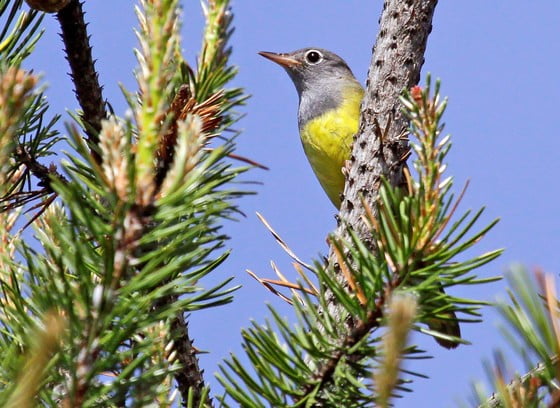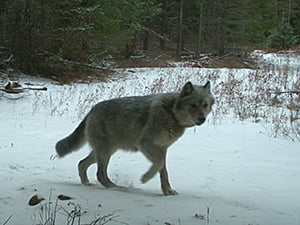
Results of the 2019 moose survey indicate the northeastern Minnesota moose population remains stable but relatively low for the eighth year in a row, according to the Department of Natural Resources.
“We’re encouraged that the moose population is not in the steep decline it was,” said Glenn DelGiudice, DNR moose and deer project leader. “In the short to medium term, we’re likely to keep seeing moose in the forests, lakes and swamps of northeastern Minnesota. But their long-term survival here in Minnesota remains uncertain.”
Survey results estimate northeastern Minnesota’s moose population at 4,180, statistically unchanged from 2018’s estimate of 3,030. The results reflect a 90 percent certainty that the moose population is between 3,250 and 5,580 animals.
The last significant population decline occurred between 2009 and 2012. Since then, the number of moose in northeastern Minnesota has been statistically stable.
Since the DNR began its modern moose surveys in 2005, northeastern Minnesota’s moose population was at its highest in 2006, when survey results estimated 8,840 animals. Each subsequent year’s survey estimate is compared to 2006’s peak estimate to calculate the population decline.
This year’s population estimate is 53 percent lower than 2006, an improvement from 2018 when the estimate was 65 percent lower.
Reproductive success and adult survival have the greatest impact on the annual count and dynamics of the moose population over time.
“We know from our research that adult female moose are getting pregnant,” DelGiudice said. “The problem is there aren’t enough female moose that are successfully producing calves and raising them to one year. That’s a significant challenge in our efforts to maintain Minnesota’s moose population.”
Survey results indicate that calf survival from birth in spring to January continues to be relatively stable but consistently low. Field studies have indicated that survival rates are even lower by spring, translating to low numbers of moose calves living through their first year.
The DNR’s detailed field research has shown that wolf predation has consistently accounted for about two-thirds of the calf mortality and one-third of the adult mortality. In some cases, injuries suffered during predation attempts – not the predation itself – ultimately killed the adult moose. In others, sickness or disease likely made the adult moose more vulnerable to predation.
The annual population survey is the most critical aspect of DNR moose management. Tracking moose numbers and determining the gender and age makeup of the population allows the DNR to closely monitor the health and well-being of moose.
In 2012, the DNR made nine forested areas a permanent part of the moose survey. These areas include different types of forest, including forests disturbed by events such as wildfires, blow-downs and timber harvests. Higher population counts within specific areas may indicate that moose prefer certain types of habitat. The DNR and its partners can use this information to better target current and future habitat enhancement projects to provide better conditions for long-term moose survival in Minnesota.
DNR wildlife research also is in its seventh year of an extensive study to determine how winter nutrition affects moose survival and reproductive success.
“There are many things we still don’t know,” DelGiudice said. “But our understanding of habitat preferences, population structure, nutrition and predation has significantly improved. Our goal is to use this new information to identify management options that better the chances for long-term survival of moose in northeastern Minnesota.”
This year’s survey involved flying in 52 survey plots distributed across northeastern Minnesota’s moose range from Jan. 3 to Jan. 17. While the survey is statistically sound, there is inherent uncertainty associated with it, because researchers will never see and count all of the animals across the 6,000-square-mile survey area.
The DNR has conducted annual aerial moose surveys each year since 1960 in the northeast. Adjustments made to the survey in 2005 made it more accurate and its annual results more comparable from 2005 to the present.
The Fond du Lac Band of Lake Superior Chippewa and 1854 Treaty Authority again contributed funding and provided personnel for the annual moose survey.
More information about moose is available on the DNR website at mndnr.gov/moose.

